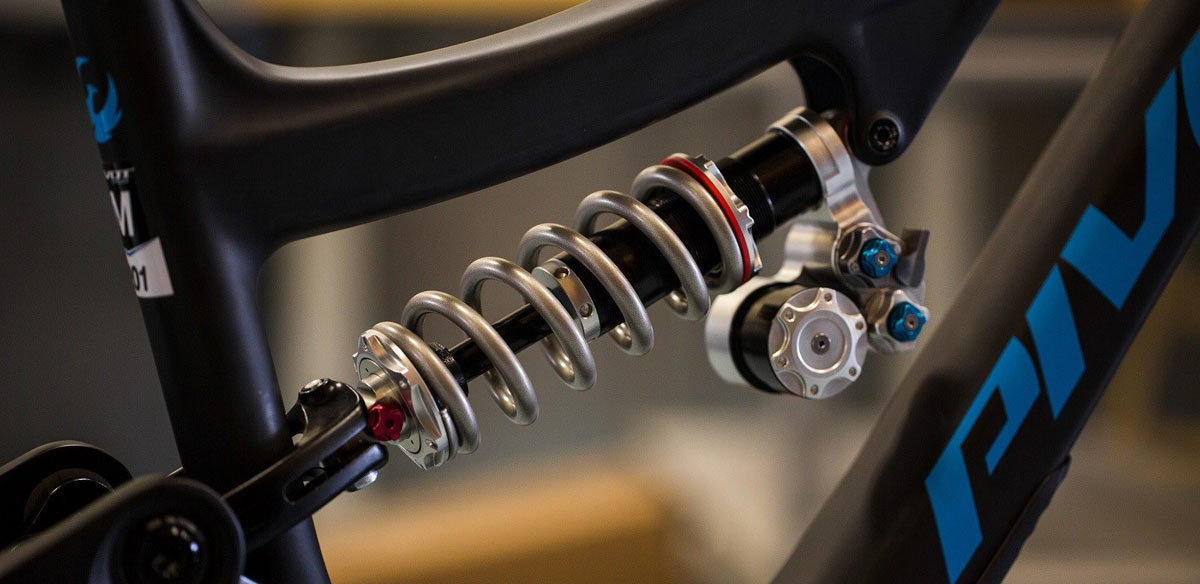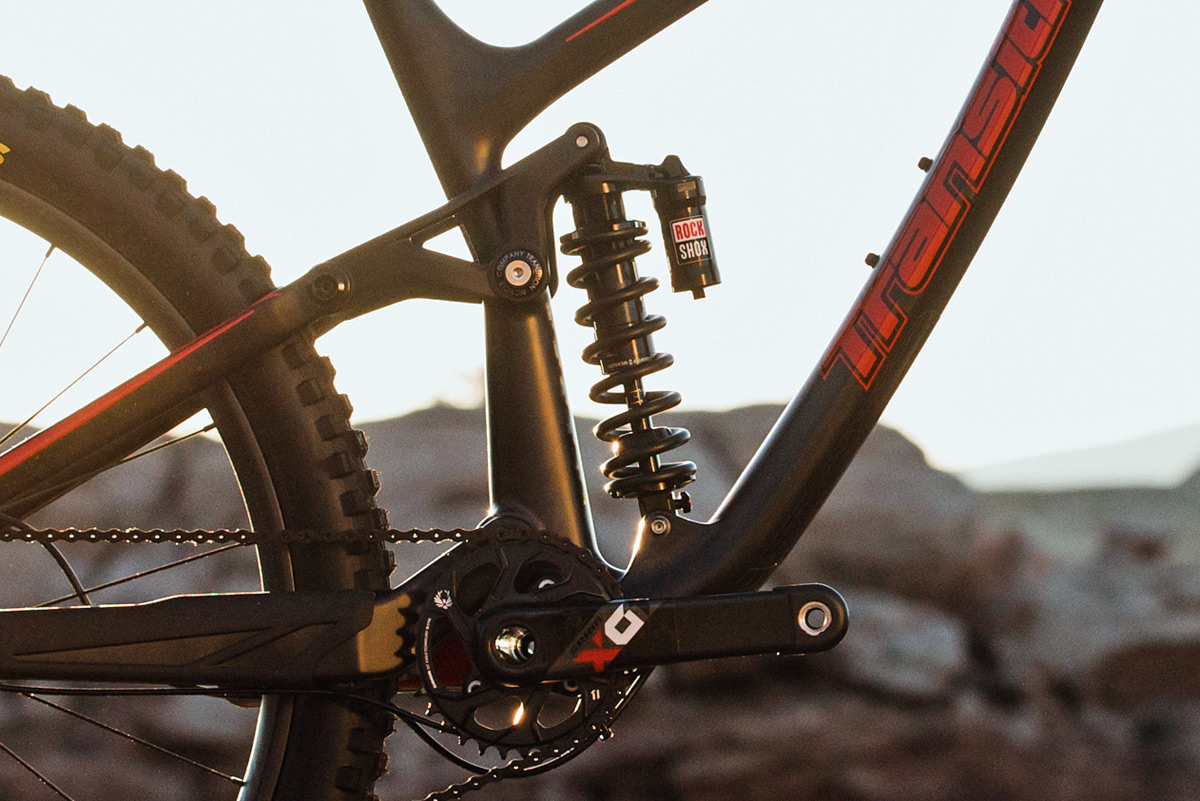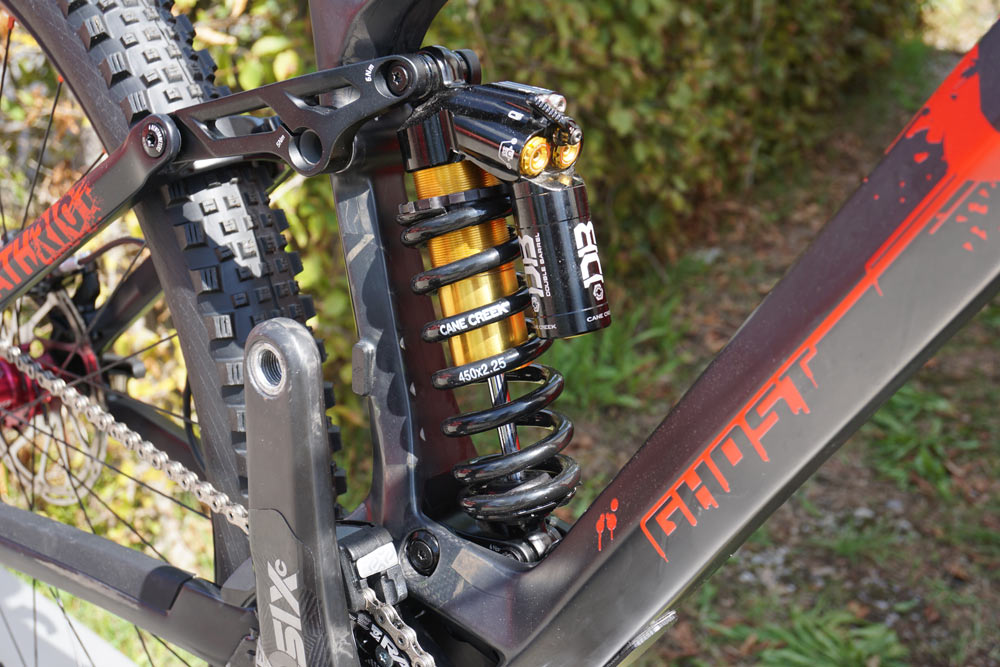This week’s Suspension Tech looks at the evolution of the rear shock, specifically why the coil shocks are seeing a resurgence. The development of full-suspension mountain bikes over the last couple decades has seen more and more capable designs switching more and more to lightweight air shocks. Then, in the last year or two, coil springs have made a comeback. And it’s not just long travel bikes, coil shocks are creeping back into trail riding segments too. So why now?
Why coil shocks are making a comeback
There are really a few separate issues at play here, so we reached out to industry insiders, including the product manager at Cane Creek – who produces both coil & air shocks (as well as coil & air forks.) We also chatted with Stefan Sack who does suspension R&D work with X-Fusion and spec’s both air & coil shocks on Bionicon bikes.
Weight
Weight had been an original driver of the switch to air shocks, as we were all clamoring to lighten up our mountain bikes to better enjoy trail riding. Cane Creek’s Sam Anderson reminds us that it’s “common for 160mm travel bikes to weigh in a 28-35lb (12.5-16kg) range now, where not too long ago it was common to be pedaling around on a 35-40lb (16-18kg) pig.” Bike designers were shaving weight wherever possible, and the coil was an obvious target.
But now carbon frame manufacturing and more efficient alloy forging & machining has made frames both lighter and stiffer. That let bike designers add a couple hundred grams back to something like suspension without a big overall weight penalty. Sam tells us, “the gain in performance outweighs (literally) the weight gain.” In fact, now many new coil shocks are even lighter than some comparable high volume air shocks.
Shock Leverage Curves
Another key point is the more advanced leverage rate curves being engineered into modern mountain bike frames. With more advanced virtual pivot-style suspension designs, and even linkage-driven single pivots, bike designers are incorporating progressive leverage curves into the physical design of the frame’s kinematics.
That’s actually a really big deal, because previous generation designs relied on the shock to provide most of the bottom-out protection. Air shocks work well for that, because they are inherently more progressive as they compress.
Supple, Friction-Free Feel
Coils shocks on the other hand are more linear. Sam said, “if the frames are being more progressive, it allows more opportunity for a linear damper to be used to get that super supple feel that can only be achieved with a coil.”
Stefan calls it just a more “consistent feeling” where you can hop on the bike and the suspension just starts moving right away. When you get your spring preload set up correctly, coil shocks are less affected by the seal stiction that air shocks exhibit, letting coil suspension eat up even the smallest of bumps. A big part of that is just that coil shocks have fewer and smaller seals to overcome.
More Travel
One thing we tie to that progressive air vs. linear coil argument is also that what we now call a “trail” bike keeps growing in travel. What was considered gravity-level travel a decade ago, might be your run-of-the-mill trail or light enduro bike now.
The longer travel a bike is, the more riders might prefer a more linear feel to the rear wheel travel, which a coil shock provides. Building a long travel trail bike – say longer than 160mm – with an air shock means that the frame suspension designer has to compensate for the progressive curve of the shock so you don’t end up with a bike where you feel like you never get to use the last 40mm or so of your bike’s travel.
Ease of Use & Durability
Cane Creek thinks the biggest reason of all to put a coil shock on your trail bike is to just set it and forget it. “People don’t want to mess with their bikes. Service is inevitable… but by having a coil shock, there is more longevity, and the maintenance interval can be prolonged relative to air springs.” By replacing an air spring with a physical coil spring, there is just one less element to worry about. That can sometimes also mean some cost savings as well, especially helpful on the OEM side to hit a desired pricepoint with a new bike.
It’s always possible that you might break a coil spring, but it seems much less common than having the air spring collapse because you didn’t maintain it well enough. Sam says, especially for riding far from home, “the coil shock can be the extra confidence that some riders are looking for.”
Consistency & Reliability
Beyond regular service, another big issue for air shocks (and the reason they’ve never really taken over in the gravity segments) is that with quick, repeated impacts the air spring heats up. And that changes the air spring rate. Now that trail bikes are getting ridden on more aggressive descents, especially as we crossover towards Enduro, the more consistent performance of a physical coil spring often becomes a more ideal, robust solution.
Stefan summed it up with the thought that all things equal, he would probably prefer to design & ride trail bikes with a coil shock. You start with a proper frame suspension design optimized to work with the linear coil shock, then dial in the correct spring rate, save weight elsewhere on the bike, and get a bike designed for “maximum fun down the hill”.
Most modern riders don’t seem to mind a few hundred extra grams, especially if they’re used to dial up the fun-o-meter. Case in point, we’ve all fully accepted adding weight back to our trail bikes via dropper seatposts to better enjoy the ride. So it looks like we can expect to see more trail bikes popping back up with coil sprung suspension.
The fun never ends. Stay tuned for a new post each week that explores one small suspension tech, tuning or product topic. Check out past posts here. Got a question you want answered? Email us. Want your brand or product featured? We can do that too.






